DP Matthew Libatique delivers an unsettling experience on Super16mm for Darren Aronofsky’s 'Mother!'
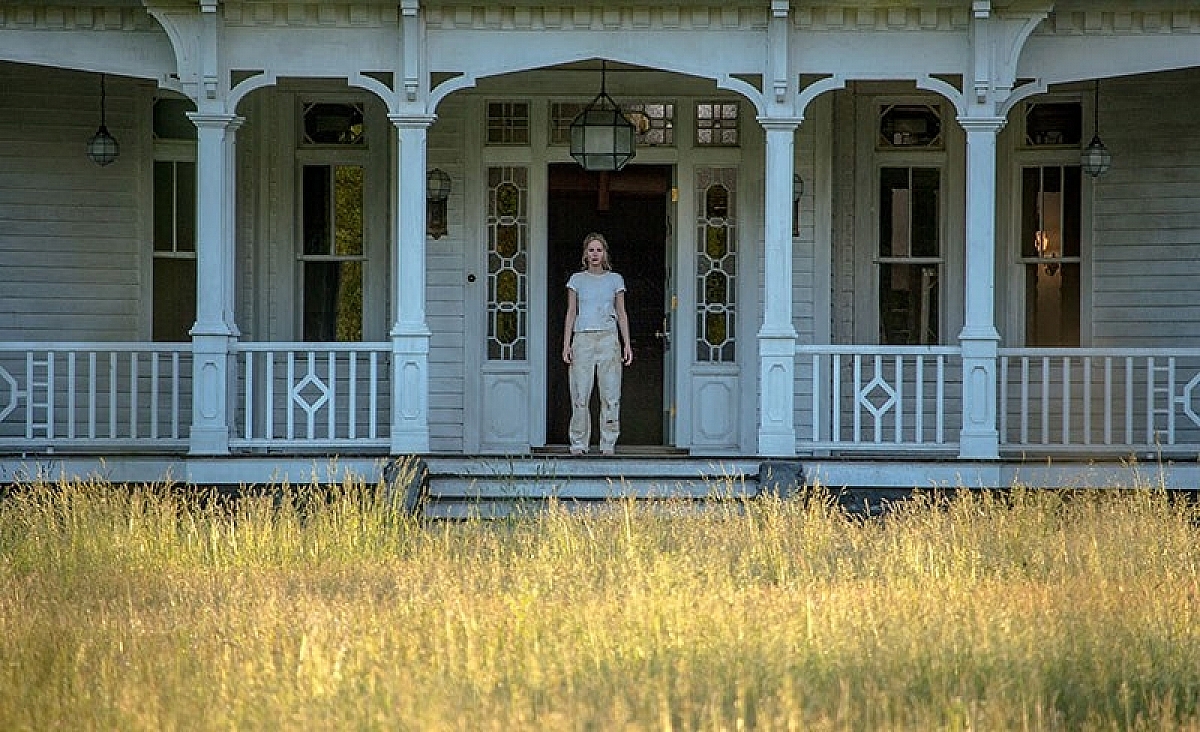
Jennifer Lawrence in "Mother!", from Paramount Pictures and Protozoa Pictures. © 2017 Paramount Pictures. All rights reserved. Photo credit: Niko Tavernise
The unnerving, phantasmagorical horror feature Mother! is the sixth filmmaking collaboration between director Darren Aronofsky and cinematographer Matthew Libatique ASC. The production saw the pair once again shooting on celluloid, although this time the director-cinematographer team opted to film on Kodak Super16mm, as they had done previously to unsettling effect on both Pi (1998) and Black Swan (2010).
Starring Jennifer Lawrence, Javier Bardem, Ed Harris and Michelle Pfeiffer, Mother! follows a young woman and her author husband whose tranquil life in a delightful eight-sided “octagon” country house is disturbed by the arrival of a mysterious couple. The personal tribulations of the newcomers lead to the untimely death of their son, followed by an unruly memorial wake held at the house. After the guests leave, and upon the successful publication of her husband’s new novel, the young couple find themselves the focus of a strange and rowdy cult who turn their home into a hell-like warzone.
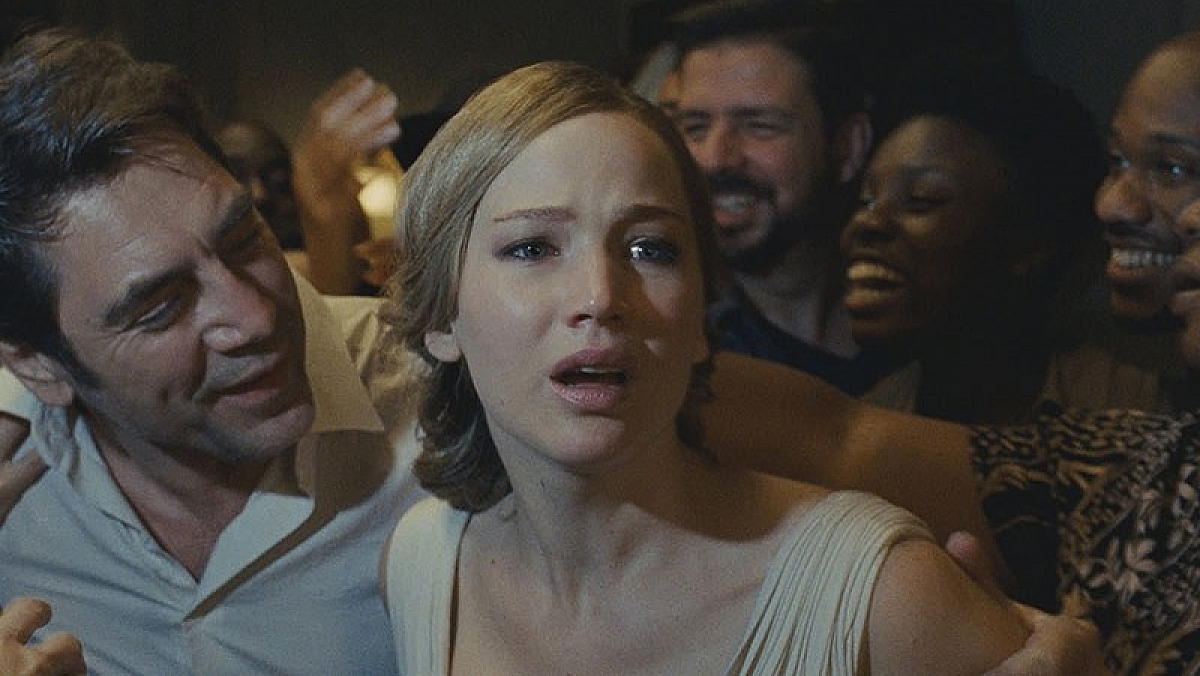
Left to right: Javier Bardem and Jennifer Lawrence in "Mother!", from Paramount Pictures and Protozoa Pictures. © 2017 Paramount Pictures. All rights reserved. Photo credit: Niko Tavernise
Mother! earned five-star reviews – hailed for its roller-coaster experience and superb craftsmanship – and was nominated for the Golden Lion at the 74th Venice International Film Festival.
“Darren and I have always preferred to shoot on film,” Libatique said. “He embraces the grain and texture of film, especially 16mm, and I still believe film is more pleasurable aesthetically. Most of our conversations leading to production were about camera language and the overall atmospheric look of the film.”
Libatique explains that it was Aronofsky’s desire to make a fully subjective movie from the mother’s (Jennifer Lawrence) point-of-view. “Darren wanted the audience to be in mother’s headspace for the entire film, and for the audience to go through these varied and increasingly disturbing experiences with her.”

Jennifer Lawrence in "Mother!", from Paramount Pictures and Protozoa Pictures. © 2017 Paramount Pictures. All rights reserved. Photo credit: Niko Tavernise
During a three-week rehearsal period with the actors in a Brooklyn warehouse, a scale blueprint of the house was sketched on the floor. Working with the director, Libatique and his camera operator, Chris Moseley, constructed a set of stylistic framing conventions that would physically connect the frame to the mother character throughout the movie.
As Libatique explained, “We decided to limit the visual language of the film to three types of handheld shots: singles on mother, over-the-shoulder shots connecting mother to her surroundings and point-of-view shots showing what mother sees. We honed every shot and the lighting to enable 360-degrees of movement and to allow the performances to move from room-to-room throughout the house with few stops along the way.”
The Montreal-based shoot for the film began mid-June in 2016, and concluded at the end of August. As the octagon house plays a central role in the story, and unable to find the right location, the construction team built the entire first floor from the ground up on a plot of land outside of Montreal for the daytime sequences, as well as a full three-story house on a soundstage for the night scenes.
Regarding the overall look of the production, Libatique said Aronofsky referred him to, “some God-awful, low-budget, 1970s US horror productions, which had bad lighting and bad camera choices that would never hold-up to modern-day aesthetic expectations. My takeaway of Darren’s vision was that he wanted something naturalistic with immediate impact, and that the film stock itself should do a lot of the work. We both agreed that the textural quality of Super16mm would be the ideal canvas on which to paint the character of mother and the events that envelop her.”
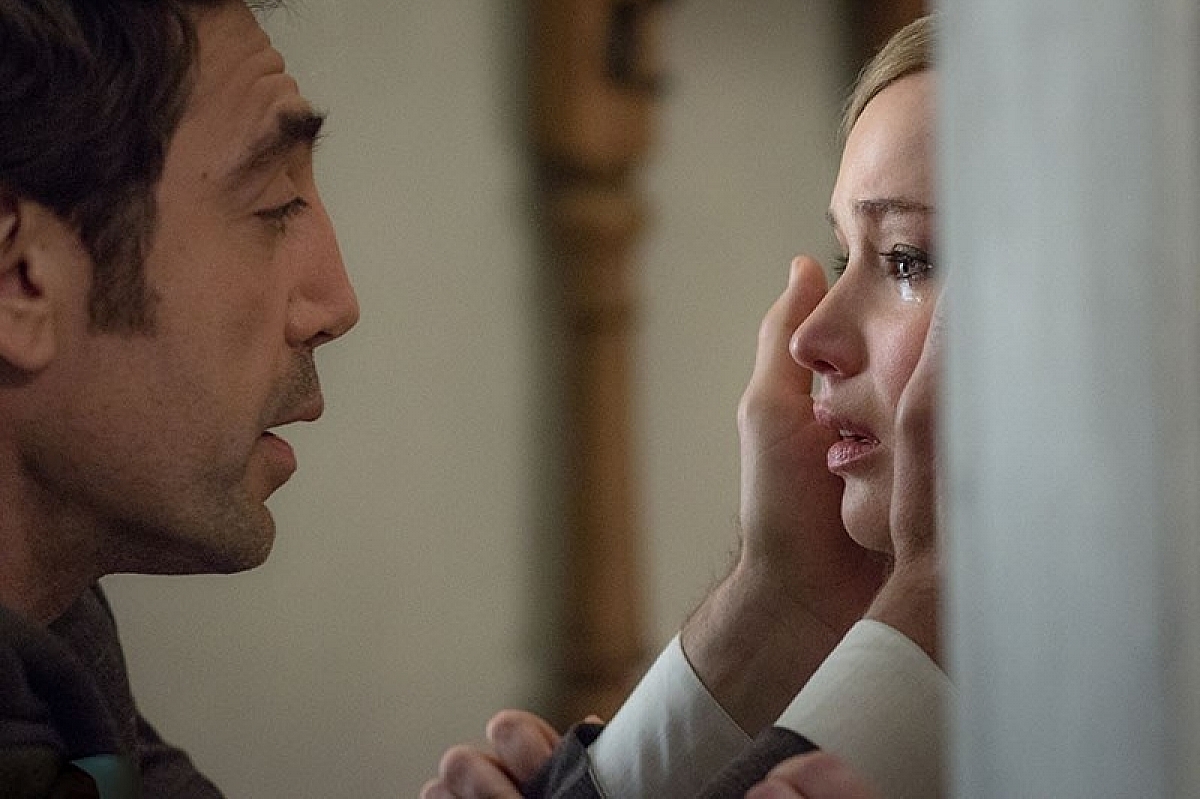
Left to right: Javier Bardem and Jennifer Lawrence in "Mother!", from Paramount Pictures and Protozoa Pictures. © 2017 Paramount Pictures. All rights reserved. Photo credit: Niko Tavernise
Explaining further, Libatique said, “Over the years I have conducted a litany if tests on all manner of film stocks, with under and over exposure. I remember really liking the look of an underexposed KODAK 200T 7213 stock, similar to how I had exposed during Black Swan. As Mother! is such a visceral narrative, and the camera moves around the house, the underexposure and the grain in the film would get me half the way there to creating our desired look. In fact, Darren’s motto is ‘the more grain the better.’ As a result, I rated the stock at 500ASA. The rest of the look came from the framing and the lighting.”
Working with a shallow depth-of-field was crucial since the plot unfolds through mother’s eyes. Libatique combined an ARRI 416 camera with a set of Zeiss Ultra 16 lenses – primarily 18mm and 14mm, with the occasional use of a 12mm.

Director Darren Aronofsky and Director of Photography Matthew Libatique on the set of "Mother!", from Paramount Pictures and Protozoa Pictures. © 2017 Paramount Pictures. All rights reserved. Photo credit: Niko Tavernise
“We wanted to direct the attention toward mother, even when she is surrounded by others,” he explained. “Although we tried not to drift away from this plan, we justified wide shots for geography when she was alone in the scene. The idea being that the house and mother represented one and the same.”
As for the lighting, Libatique developed a color arc for the production. The story starts balanced with controlled warm white light used to introduce the main characters. Then, as the story progresses and more and more people invade the home, rich hues were methodically blended into the visual palette helping to underscore the terrifying atmosphere.
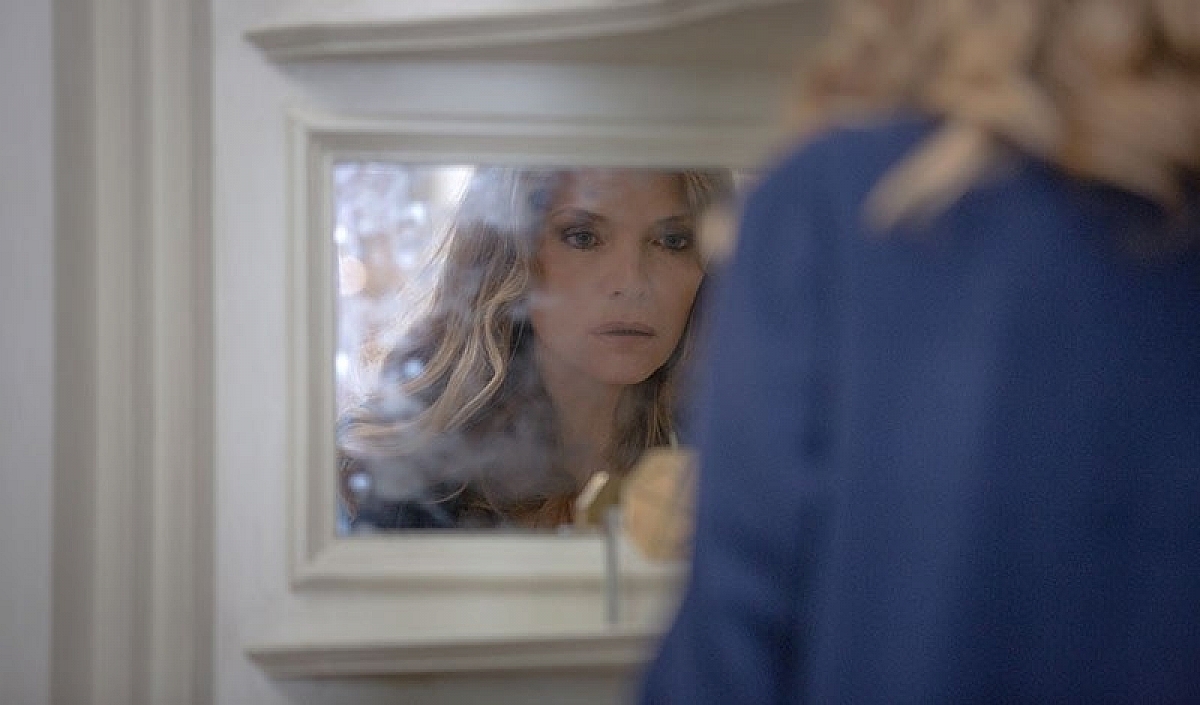
Michelle Pfeiffer in "Mother!", from Paramount Pictures and Protozoa Pictures. © 2017 Paramount Pictures. All rights reserved. Photo credit: Niko Tavernise
Taking things a step further for the third act, where the action goes “pear-shaped with the rowdy cult,” Libatique said he re-rated the film stock to 320ASA and pushed by one stop. “This has the effect of delivering a thicker negative – more saturated in color and with increased contrast. As the visceral carnage increases, so the skin tones and overall image get gradually redder. By the climax of the movie, the on-screen visual is predominantly red, in tune with the butcherous nature of the narrative.”
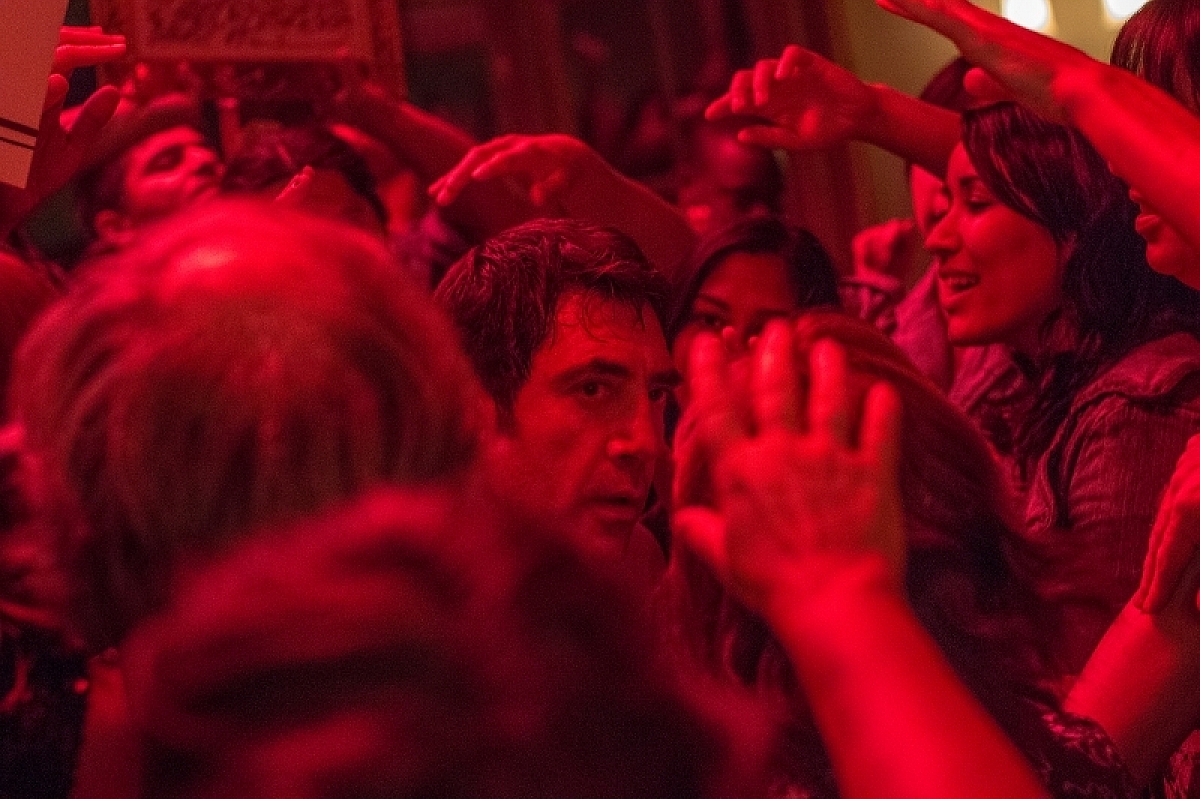
Javier Bardem in "Mother!", from Paramount Pictures and Protozoa Pictures. © 2017 Paramount Pictures. All rights reserved. Photo credit: Niko Tavernise
Libatique applauds the capability of the 200T to record the dynamics of the lighting – from the natural light through windows to the bowels of the dark and cavernous house.
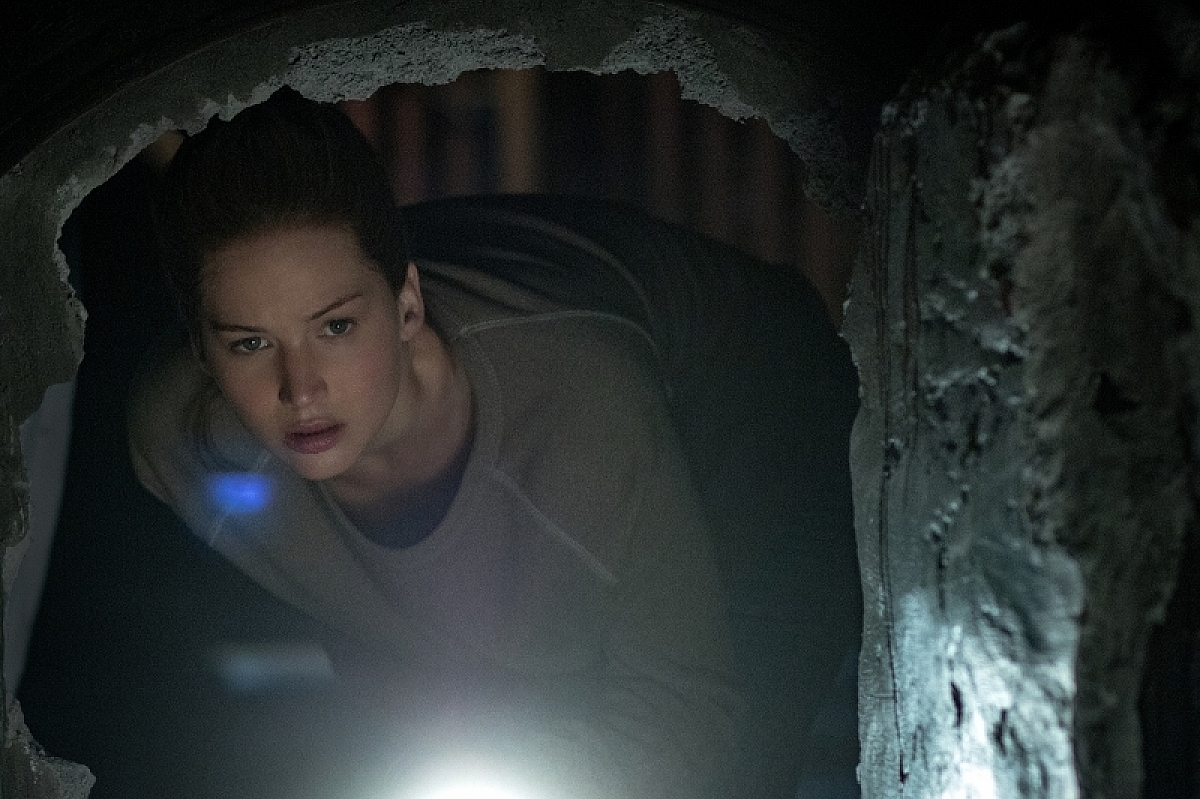
Jennifer Lawrence in "Mother!", from Paramount Pictures and Protozoa Pictures. © 2017 Paramount Pictures. All rights reserved. Photo credit: Niko Tavernise
“What I like about film is you can pick an exposure, yet nothing in your shot has to be within that exposure and you still get the dynamic image,” he said. “You can do the exposure dance up and down by several stops, and the highlights and blacks exist perfectly well in that range. With film, you know you have the detail, and it's always been a juggernaut for latitude. Shooting digitally, you need to be much more mindful of adjusting the ISO for highlights or low lights and blacks.”
“I could not be happier, to see the renaissance of Kodak and film as an image-making medium,” Libatique said. “Each movie is its own world, and it’s your responsibility as a DP to create the atmosphere for that world.
“Film gives you a great way to distinguish your production from others, at a time when I see digitally-oriented productions banding homogenously and uniformly together without too much variety. Put simply, a lot of digital films simply look the same.”
And he urged, “If you get the opportunity to shoot on film, don't think twice about it – do it. There’s a fundamental discipline that you learn on film that will stand you in good stead for all of your other imagemaking.”